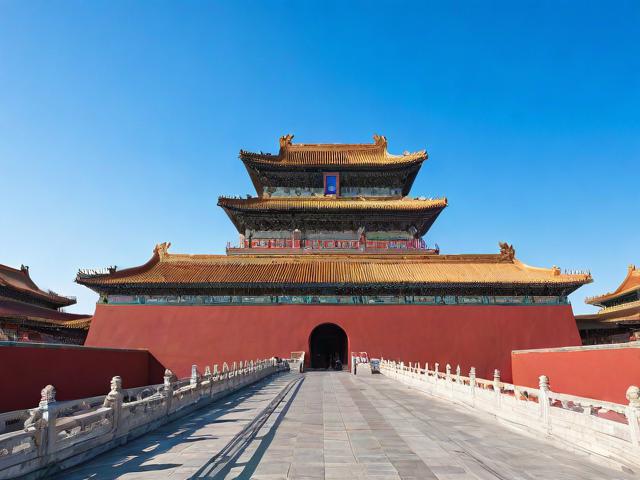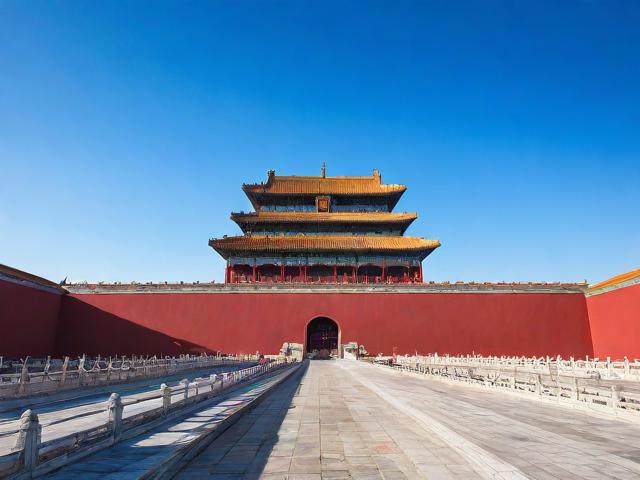
Beijing, the capital of China, is a city rich in history and culture. It offers a wide range of tourist attractions that showcase its historical significance and modern development. Here are some practical information about traveling to Beijing from preparation to activities during the trip:
1、Before the Trip
Travel Documents: Ensure your passport is valid for at least six months beyond your planned stay in China. Apply for a Chinese visa well in advance, as the process can take several weeks. You may need to provide proof of accommodation, travel itinerary, and financial means.
Best Time to Visit: The best time to visit Beijing is during spring (April to May) and autumn (September to October) when the weather is mild and pleasant. Summers can be hot and humid, while winters are cold with occasional smog.
Clothing: Pack according to the season. Light clothing for summer, warm layers for winter, and comfortable walking shoes are essential. Don't forget a hat and sunglasses for sun protection.
Currency Exchange: The local currency is the Chinese Yuan (RMB). Exchange some money before arriving, but know that ATMs and credit cards are widely accepted in tourist areas.

Language: While many signs are bilingual and some people speak basic English, learning a few common phrases in Mandarin can be helpful. Phrases like "hello" (nǐ hǎo), "thank you" (xiè xie), and "how much?" (duō shǎo?) can go a long way.
2、Transportation
Airport Transfer: Beijing has two major airports, Capital International Airport and Daxing International Airport. Both are wellconnected to the city by airport shuttle buses, subways, and taxis. The Airport Express subway is a convenient and affordable option.
Public Transportation: Beijing's public transportation system is extensive and efficient. Subways and buses are the primary modes of transport. Get a transport card or use a contactless payment method like Apple Pay or Alipay for easy access. Taxis and ridehailing apps like Didi are also widely available.
Tourist Passes: Consider getting a Beijing Tourist Pass, which offers unlimited travel on public transportation and discounts to major attractions.
3、Accommodation
Where to Stay: Choose accommodation based on your itinerary. Downtown areas like Wangfujing and Sanlitun offer proximity to major sites and vibrant nightlife. For a more authentic experience, consider staying in hutongs (traditional alleys) or near the historic Drum and Bell Towers.
Types of Accommodations: Beijing caters to all budgets, from luxury hotels and boutique guesthouses to budget hostels and Airbnb options. Research and book in advance, especially during peak seasons.
4、Dining
MustTry Foods: Don't miss Peking Duck, a Beijing specialty. Other culinary delights include hot pot, dumplings, and street food like jianbing (savory crepes) and roujiamo (Chinese hamburger).
Restaurant Etiquette: When dining, it's customary to wait for the host to signal the start of the meal. Use chopsticks for eating, and if you're not comfortable using them, most places will provide forks upon request. Tipping is not required as a service charge is usually included.
5、Sightseeing Suggestions
Day 1: Historical Exploration
Start your day early at the world's largest square, Tiananmen Square, where you can witness the flagraising ceremony if timed right. Admire the grandeur of the Monument to the People's Heroes and the Mausoleum of Mao Zedong.
Head to the adjacent Forbidden City, a sprawling palace complex that served as the imperial residence for over 500 years. Explore the Hall of Supreme Harmony, the Imperial Garden, and the Palace Museum, which houses a vast collection of Chinese art and artifacts.
In the afternoon, visit the Temple of Heaven, an architectural marvel designed for emperors to pray for good harvests. Stroll around the serene park and admire the intricate details of the祈年殿 (Hall of Prayer for Good Harvests).
Day 2: Imperial Gardens and Modern Marvels
Spend your morning at the Summer Palace, a vast ensemble of lakes, gardens, and palatial structures. Take a boat ride on Kunming Lake or hike up Longevity Hill for panoramic views.
After lunch, head to the 798 Art District, a hub for contemporary Chinese art and culture. Explore galleries, cafes, and shops housed in renovated factory buildings.
In the evening, catch the breathtaking light show at the Olympic Green, followed by dinner in one of the area's trendy restaurants.
Day 3: Cultural Immersion and Departure
Begin your day with a visit to the National Museum of China, home to an extensive collection of Chinese history and culture exhibits. Allow ample time to explore the various galleries, including those dedicated to ancient artifacts, modern history, and cultural heritage.
For a taste of traditional Beijing, stroll through the Hutongs near Nanluoguxiang Street. These narrow alleys are lined with courtyard homes and offer a glimpse into local life. Enjoy a leisurely lunch at a hutong restaurant serving authentic Beijing cuisine.
Before leaving, pick up some souvenirs at the bustling Wangfujing Snack Street, known for its variety of local snacks and street food. If time permits, stop by the Drum and Bell Towers for a quick visit.
In conclusion, visiting Beijing promises an enriching journey through time, blending ancient traditions with modern advancements. From historical landmarks to delectable cuisine and vibrant neighborhoods, this itinerary ensures a comprehensive experience of China's captivating capital.
到此,以上就是小编对于“北京旅游景点英文”的问题就介绍到这了,希望介绍的几点解答对大家有用,有任何问题和不懂的,欢迎各位朋友在评论区讨论,给我留言。


发表评论